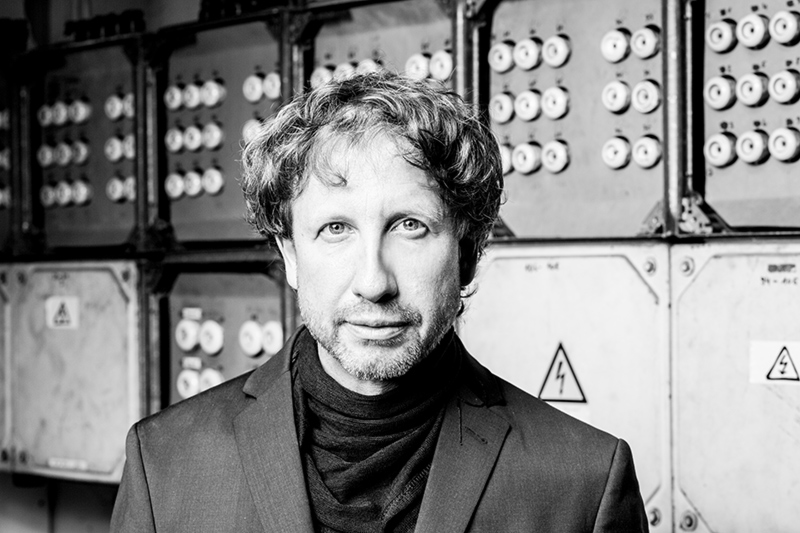SCHIRN MAGAZINE: Mr. Hanf-Dressler, what exactly is hypnosis?
Nikolai Hanf-Dressler: Hypnosis is a means of putting people in a trance. A trance is a monotheistic state, a kind of “oneness of thought,” in which the so-called “firewall” that protects the unconscious is removed. The trance makes it possible to access patterns of thought and behavior, “imprints” (a formative past experience that influences our behavior today without us being aware of it – editor’s note), and to liberate or dissolve them – something that cannot be achieved with normal counseling or psychoanalysis. A theta wave state is produced in the brain like you still have in children up to the age of six – kids that age can be easily influenced and learn a great deal very quickly. My clients are also placed in that state. In other words, hypnosis is a means of arriving at a state of hypnotic trance. People often talk about being “in hypnosis” or “under hypnosis,” but actually that is incorrect. What characterizes a hypnotic trance is that the unconscious is opened and you have a rapport connection: the client follows the therapist, and what the therapist says is taken up by the client. Which is why it is important not to do suggestive therapy so as not to simply alter the symptoms. For example, I could stop a client from biting their nails by using suggestion, but then he might break out regularly in a rash instead.
When you open the unconscious it is not possible to select which topics, recollections and emotions will come through the floodgates – how can you control that as a therapist?
As a hypno-analyst I bring clients into a “trigger situation,” in other words a situation in which they feel fear. That is not necessarily the situation of their “core fear,” meaning the aspect underlying their current fear. So I guide the client – say, someone with a social phobia – into the trigger situation, sending him during the hypnosis in his mind into a store with a lot of people. And I continue to increase the pressure to the boiling point of the feeling so that I have enough momentum to build ‘affect bridges’: I count to three and then my client finds himself in a much earlier event. I accompany him to situations lying further and further in the past until I get to the core event during which the client first passed a judgement on himself and the world, in which he felt vulnerable and formed beliefs such as “I don’t belong” or “I am alone.” Now the emotion is separated from the event – and subsequently the client can still remember the event itself, but it is no longer threatening. That also works very well for somatic problems, for example there are politicians who have to vomit before every speech they make in public – typically there is an emotion underlying that, too. One session is sufficient to separate emotion and situation from one another. It can take up to a maximum of five sessions for generalized anxiety disorders.

So the hypnosis method is somewhat similar to the methods used in behavioral therapy – except that you don’t actually physically go into a situation, but only enter its suggestively, is that right?
While you do really enter the situation in hypnosis, that happens through association and is simulated. So you do experience it again as real. But it is very gentle because it happens quickly and I can guide the client: I can make associations, I can tone down the scene and I control everything. In behavioral therapy I have a particular fear program, which I tackle as a client with my behavior until I realize that it is no longer dangerous and I no longer need to be afraid. But that is a very hard route to take and is really exhausting! In hypnotherapy we eliminate this fear first and then do a kind of behavioral therapy in which we, say, ride elevators with someone who has an elevator phobia or travel by plane if they suffer from a fear of flying. But this is done more to verify that the fear has really disappeared rather than being behavioral therapy.
What kind of problems do clients consult you about?
Fears, depressions – especially in winter – psychosomatic complaints such as tinnitus. I specialize in psycho-neuroimmunology, in other words, everything that has to do with allergies and the immune system. It is amazing how quickly problems with food intolerance can be eliminated!
No recording of the performance with Ulay was made available to the public. Please tell us exactly what happened on the evening.
I was commissioned to penetrate Ulay during the performance with the question “Who are you, Ulay?” First I put him in a deep trance, which was a little troubling for some people in the audience, because it does look a little gruesome. For the client it is a very comfortable state, but because we don’t have a trance culture here as in other countries (apart from the rituals of the Catholic Church, which have something trance-like about them) people are not familiar with them. The audience was advised in advance that there might be abreactions, because when a client’s imprint opens, we do not try to close it – everything must come out. But many people can’t imagine that we as therapists can cope with a client who, for example, suddenly bursts into floods of tears. For people who haven’t experienced that before it can be quite shocking at first. You have someone sitting there, who is completely open, their mask is no longer there – and we see them as they really are. I find this vulnerability incredibly beautiful! In this state the greatest dictator becomes a small boy who only wants to be happy! But with Ulay, even before I had placed him in a trance I saw someone who is completely genuine and authentic.

The trance inductions happen quickly and go very deep. Ulay sat on the stage on a comfortable chair. He was in such a deep trance I could hardly make his words out; he mumbled awfully and I often had to repeat what he said. Then there was a regression – in other words a return to an earlier stage of development – and Ulay became Uwe, a small boy in lederhosen. I built other affect bridges for him, in other words reinforced the emotion, so that he returned to his memories. The fact that he hadn’t come to me with a specific problem represented a challenge of sorts. We had arranged that I should only work with what came up and not try to lead him in a certain direction. But I used associations to build a kind of maze through which I guided Ulay: some doors and routes were closed off, others were open. And I took the first emotion that arose so he would go into a further regression. So the situation cropped up in which his father, an asthma sufferer, was in danger of suffocating; and back then the young boy Uwe went out at night to find a doctor. In all the situations I always asked “Is that you?” And every time he answered “Yes it is, that is also me.” And so many different parts of his personality were revealed. He realized he was always the person with which he identifies at any one time.
He was searching for a very clear answer to the question “Who am I?” But this answer only came when I removed him from his logic and he realized that he still exists even though his logic is absolutely silent. Now he was no longer an artist, a man, etc. He simply WAS. He suddenly felt and noticed this expanse: This is me! That was so moving for him that he wept. He discovered what constitutes his Self as a feeling. A feeling which is beyond the “I-centeredness of the Ego;” he described it as a sense of “deep peace.” Not a feeling that is produced from the outside, say, through success, but rather a dissolving of the Ego – it is not something you can really put into words.
How did members of the audience react?
Completely differently. Some were totally inspired, some were moved and emotional. And I had the impression some felt it was like the devil’s work!
People imagine that when hypnosis is carried out in front of an audience the hypnotized person will perhaps jump around the stage like a frog, because he is no longer in control of his actions and can be manipulated. What was that like during the performance?
That was the difficult thing for me, because I wasn’t doing any therapy with Ulay, but was simply to take what came up. And I was lucky that a great deal did come out. But there was a certain direction nonetheless, namely how do I get Ulay to answer his question “Who am I?” Then I removed him from his logic: Basically you send the client into the gap between his thoughts so that he realizes that everything is empty and meaningless. That might sound brutal, but it implies the freedom that you are only that which you accord importance! Ulay repeatedly made associations and then went into the gap again and experienced his self as much larger then everything else. Simultaneously, he retains a certain control over his consciousness and only does what he wants to do.
And did Ulay find the answer to his question?
Yes. He didn’t think he would, but yes, he did.
Did you work on the whole thing with Ulay afterwards?
Yes, Ulay had to give me his consent in advance that we would work on it. After all, during the hypnosis so much can come up – and you can’t choose what it will be – and that is then on the surface. Ulay told me that the next morning he found it difficult to get up and felt a little strange. But we are keeping in touch and are already planning our next joint performance!

